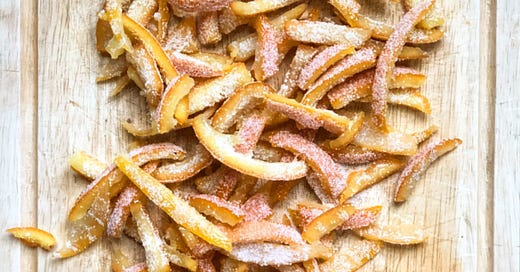This week a “For Sale” sign went up in front of our house.
And with it, a skein of emotions started unravelling in my heart.
While a house is an inanimate object, it absorbs the joys and sorrows and laughter and tears of those who inhabit it. A patina of lived experiences settles into the walls like a fine coat of paint. Everything tells a story - the book left cracked open on the armchair, boots carelessly kicked off after a walk, garden shears on the windowsill, a scent, a sound, a photograph, a bubbling pot of something delicious singing softly on the stove.
It all adds up to home.
And that is the hardest part of saying goodbye. Twenty five years in one place creates a deep root system, and as every gardener knows, when we pull up deep roots and relocate them elsewhere, the likelihood that the plant will survive is pretty slim. So when we uproot ourselves, it can feel precarious, dangerous even. What if the roots don’t take hold?
The recipe for making a house a home
When we move into a new place, practical matters take precedence. Painting, cleaning, unpacking. Perhaps some renovations are in order - shelves to be built, closets to be installed, bathrooms or kitchens to be redone. In the process of making our nest special, a thousand tiny details.
But it is only when all the work is done, when disorder sneaks in like a mischievous child, that the house becomes itself. It takes some time for laughter to absorb into the woodwork, for the cat to find all of her favourite sunny spots, for the errant wine stains to spot the carpet, the evidence of a joyful dinner the night before.
“A house is made with walls and beams; a home is built with love and dreams.“
—Ralph Waldo Emerson
Here’s the thing. We can’t see beneath the surface of things. When there’s just a few inches of greenery above the ground, it’s hard to know how fast the roots are growing. But when new plants are watered with the same potent blend of love and laughter and tears and joys and sorrows, they thrive. Before long, the roots are well established. We settle back with our book, stroke the purring kitty on our lap, sip our tea and think to ourselves: there’s no place like home.
If you liked this post, let me know by clicking the ❤️ button. It helps spread the word about Delicious Bits and brings me joy. Thank you, dear readers and eaters!
Candied orange peels
makes about 40 peels
I’m not much of a sweet tooth. Salty over sweet, cheese over chocolate. But there’s no denying the power of a tiny sugar surge to pick me up and give me a boost of energy. When blood oranges are in season, I always make a batch of these lovely candied orange peels. Tucked away in a jar, they’re the perfect pick me up. As I pack up 25 years of living, they’re an especially welcome treat.
Note: It’s fun to do a mix of citrus. Try adding grapefruit or lemons. The multicoloured jewels of fruit make a wonderful dinner party gift.
Ingredients
3 large or 5 medium oranges, preferably organic (see Note)
3 cups water
2½ cups sugar
Using a sharp paring knife, slice off tops and bottoms from the oranges; discard. Score peels vertically into quarters, then remove peels with white pith attached; save flesh for another use.
Put peels in a saucepan of cold water to cover and bring to a boil. Lower to a simmer and cook, uncovered for 30 minutes.
Drain the peels and slice lengthwise into ¼"-wide strips. Bring 1½ sugar and 3 cups water to a boil in a medium saucepan, stirring to dissolve sugar. Add peels, reduce heat, and simmer over low heat until most of the liquid has reduced. Take off the heat, cover and let sit overnight in the syrup.
The next day, bring the peels and their liquid to a simmer over a low heat. Simmer for 15 minutes. Drain and let the peels dry and cool for at least 30 minutes.
Spread the remaining cup of sugar on a rimmed baking sheet lined with parchment paper. Roll the peels in the sugar, coating all sides. Transfer the peels to a wire rack set over the baking sheet and let sit until they are completely dry. This can take a day or two.
Store in an airtight container at room temperature, sprinkled with some of the remaining sugar to prevent them from sticking. They will keep for two to three months, although they won’t last that long!






